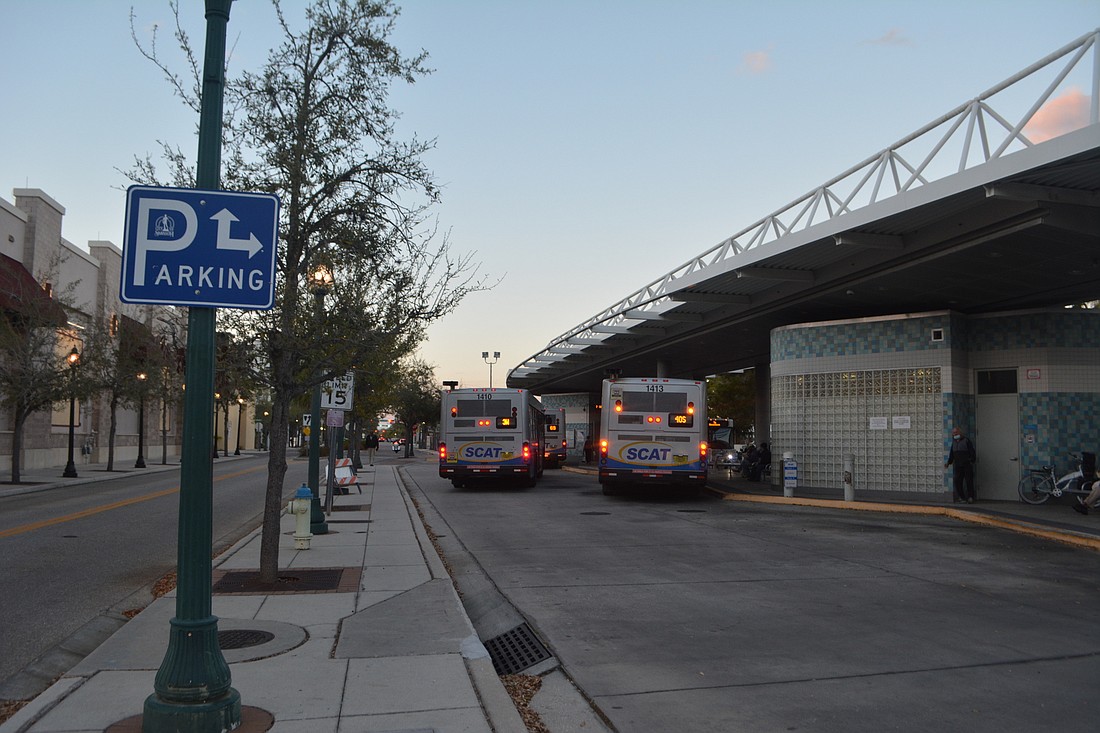- April 26, 2024
-
-
Loading

Loading

As the County Commission debates the future of the Sarasota County Area Transit bus transfer station on Lemon Avenue, the City Commission is unanimous in its agreement that it would like to see the facility removed from the property.
On Monday, the City Commission agreed to send a letter to Sarasota County encouraging officials to move the SCAT transfer station from the 0.41-acre property at 150 Lemon Ave. The item was placed on the board’s agenda by Commissioner Erik Arroyo, who noted the county has been deliberating changes to the operations of SCAT, which could include the long-discussed relocation or elimination of the downtown transfer station.
Monday’s meeting agenda included documents related to the city’s 2002 sale of the transfer station site to SCAT, which featured a provision giving the city the right to reacquire the property at a “fair market value” price. The county is obliged to notify the city if it intends to sell the property, giving the city a 120-day window to decide whether to purchase the land. The city sold the land to the county for $491,212.
Arroyo said freeing up the property on which the transfer station sits could allow the city to move on several items officials have discussed in recent years. Arroyo noted the city has talked about extending the brick-paved Lemon Avenue mall north of First Street toward the Rosemary District, and he said eliminating the bus station could help facilitate that effort. He also cited the city’s ongoing need for additional office space and said acquiring a site adjacent to City Hall could be used to address that issue.
The county has signaled its willingness to work with the city on the possibility of selling the transfer station. On Feb. 24, the County Commission unanimously directed County Administrator Jonathan Lewis to research the potential effects of relocating the transfer station and options for the future of the site. SCAT director Jane Grogg produced a report on that topic for the commission April 2.
County Commissioner Christian Ziegler, who first raised the item at the Feb. 24 meeting, said he wanted to look into the topic after having one-on-one conversations with several city commissioners. Ziegler said the transfer station posed serious logistical challenges that warranted consideration of moving the facility.
“I see the buses coming in, and it’s pretty unsafe, and it’s also very awkward and difficult to navigate,” Ziegler said.
Mayor Hagen Brody expressed a similar sentiment at Monday’s City Commission meeting.
During the Feb. 24 discussion, County Commissioner Al Maio said he had also heard lobbying to relocate the transfer station from members of the business and design community. In March, the city’s Downtown Improvement District discussed the possibility of combining the bus station property with adjoining city-owned sites to create a mixed-use complex with public parking at the corner of Lemon Avenue and First Street.
“It’s hard to argue it wouldn’t be a better experience up toward City Hall if the bus station weren’t there,” said Chris Gallagher, the vice president at Hoyt Architects.
Maio said selling the transfer station property could require the county to return some funds it received for construction due to Federal Transit Administration standards. Grogg affirmed that point in her report, stating that because more than $2.8 million of the project was funded via Florida Department of Transportation grants, the county could owe the state agency money if it disposes of the project before the end of its expected useful life of 40 years.
Grogg stated that a 2013 discussion of relocating the transfer station to Ringling Boulevard triggered resident opposition and the need to reconfigure routes to accommodate the new site. A 2016 analysis stated the current station was adequate at the time but recommended expanding or relocating the facility if the county added more routes or increased service frequency. At the time, the County Commission determined it was not worth the costs to relocate the transfer station.